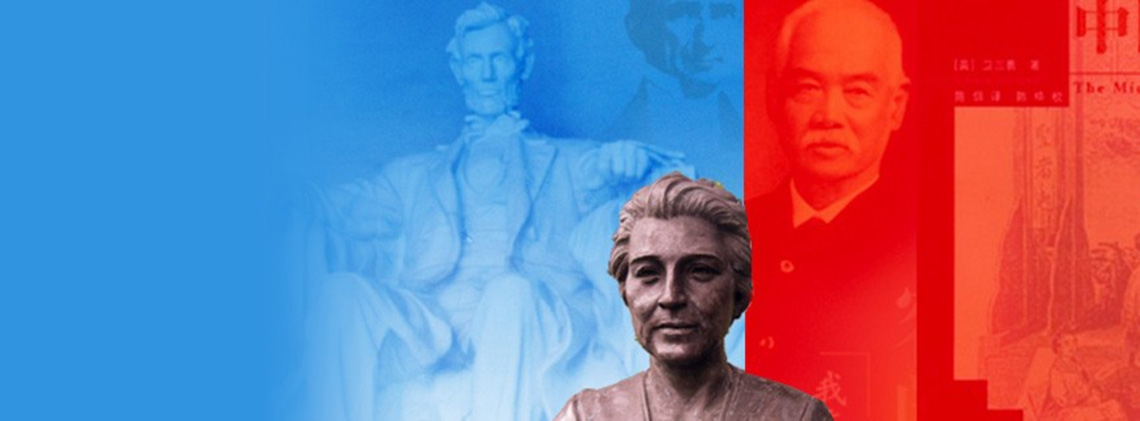
Sino-American Cultural Exchange
Splendid
Chi Culture
Topic
Sino-American Cultural Exchange
In 1784, the American merchant ship Empress of China arrived in China, initiating what has come to be known as “The Old China Trade” and opening the gate to Sino-American relations. When it returned to its homeport of New York in 1785, the Empress of China carried a cargo of Chinese products including porcelain and silk whose artistry was much appreciated. Merchant vessels from various American ports began journeying to China and commerce became an important part of Sino-American relations.
The first American Protestant missionary to China, arriving in 1830, was Elijah Coleman Bridgeman (1801–1861), sponsored by the American Board of Commissioners for Foreign Missions, a group originating in the Congregational Church. By the end of the Qing dynasty (early twentieth century) the number of American missionaries in China had reached 2,000. Missionary work had become the most critical medium of Sino-American cultural exchange during this time. American missionaries founded newspapers, translated and published books, and built schools. These newspapers, books, and schools were carriers of Western culture and had a great influence at that time in changing aspects of Chinese ideology, society, and education. In the nineteenth and early twentieth centuries there occurred ever-deepening Sino-American cultural exchange. Chinese workers were recruited to work on American infrastructure projects in the western United States, such as the transcontinental railroad, and there was an upsurge of Chinese migration to America. An increasing number of young Chinese also went to America to receive education, especially after the 1909 implementation of the Boxer Indemnity Scholarship Program, in which funds overpaid by China to the United States in connection with the anti-foreign Boxer Rebellion (1899–1901) were utilized for scholarships for Chinese to study in the United States. Among those who benefited from this program and were educated at American schools were individuals who in the latter part of the twentieth century had a great influence on Chinese culture, education, science and technology.
During the Republican era (1911–1949), China and the U.S. maintained close diplomatic ties. At this time, many Americans tried and to some extent succeeded in promoting aspects of American culture to China. In this period some Chinese scholars and elite politicians adopted and imitated American methods as a way, as they saw it to strengthen China. Simultaneously, academics and international students served as cultural intermediaries for Sino-American exchange with Christian universities established in China playing an important role in furthering cultural interaction.
In 1919 the American philosopher and educator John Dewey (1859–1952) arrived in China, staying until 1921, giving lectures and writing articles. This was a key event in America’s influence on Chinese culture, especially during the 1920’s. On the other hand, at about the same time, a large number of Chinese international students had come back from America. These included Hu Shih (1891–1962) and Jiang Menglin (1886–1964) who became leaders in various spheres of activity in the country, forming a kind of backbone for an evolving China. They disseminated and promoted American culture and this enhanced the society’s tilt toward it. Some American foundations also expanded their philanthropic funding to China by subsidizing Chinese culture, education, and scientific study.
From the outbreak of the Korean War (1950–1953) to Richard Nixon’s visit to the People’s Republic of China in 1972, China and America had had a confrontational relationship. Following Nixon’s visit, and especially after China and American established diplomatic relations in 1979, cultural and educational interaction was fully restored. Programs of economic reform and modernization (The Chinese Economic Reform) which began in the late 1970’s revealed that China was in urgent need of advanced technologies and management experience, both of which came to be imported from the U.S. Since the 1980s, when travel abroad to study in America began to become more available, it has enjoyed enduring popularity among Chinese students. American popular culture remains all the rage among some young Chinese. Chinese elements have spread to American society as well, for example, the Chinese language has become a desirable and trendy one to learn, with the largest number of students in some American schools. Humanistic and academic exchange between China and the United States as represented by the Fulbright Scholar Program and other such endeavors has promoted the development of advanced education and academic studies in both countries.
When looking at the communication between China and the United States during the past two centuries, American culture in China has proven to be much more influential than Chinese culture in the U.S. But that does not mean that Sino-American cultural interaction has been one-way. Since the mid-eighteenth century, ideological culture as represented by Confucianism, material culture as represented by soybeans, and aesthetic culture as represented in artwork, have all had different levels of impact on the U.S.
As early as in 1738, Benjamin Franklin (1706–1790) strongly praised Confucius for his ethical ideas. Ralph Waldo Emerson (1803–1882) and Henry David Thoreau (1817–1862) were familiar with Confucianism and their transcendentalist philosophy shows evidence of its influence. Chinese arts and crafts—especially porcelain and textiles were imported in large quantities to America with the development of “The Old China Trade” eventually inspiring American imitations or variations of Chinese works. In the mid nineteenth century and thereafter, Chinese immigrants introduced Chinese food culture and ingredients to the U.S., enriching the American diet and lifestyle.
In contemporary times, Chinese kung fu (or gongfu, Chinese martial arts) has attracted many American young people. Chinese movies have achieved box office success in the American market and have become an important factor in the American film industry. As more and more Americans learn the Chinese language, Confucius Institutes (non-profit educational organizations affiliated with the Ministry of Education of the People’s Republic of China) are being established throughout the U.S. to facilitate knowledge of Chinese culture to Americans whose interest in China grows ever stronger.



